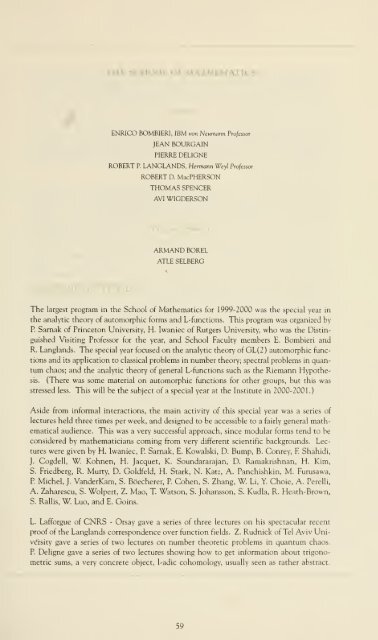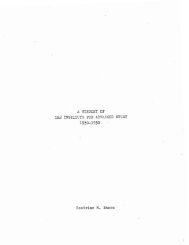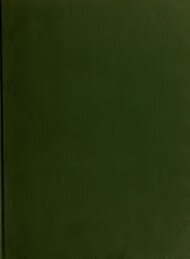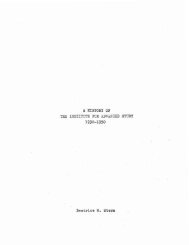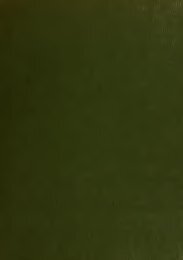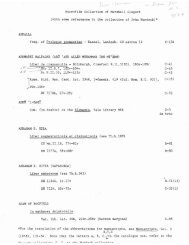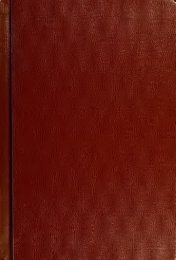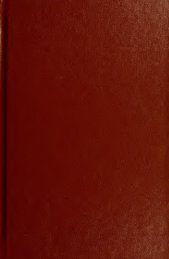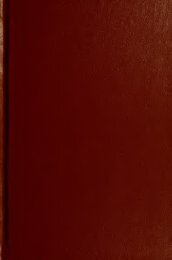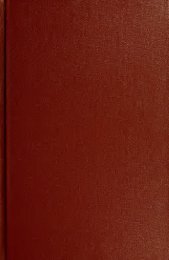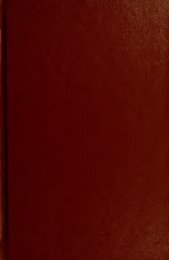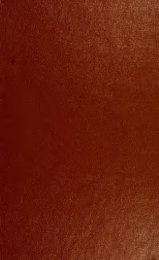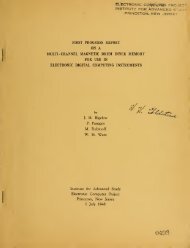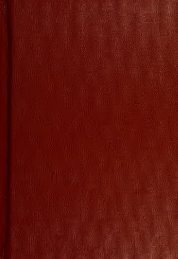Report for the academic year - Libraries - Institute for Advanced Study
Report for the academic year - Libraries - Institute for Advanced Study
Report for the academic year - Libraries - Institute for Advanced Study
Create successful ePaper yourself
Turn your PDF publications into a flip-book with our unique Google optimized e-Paper software.
ENRICO BOMB1ERI, IBM von Neumann Professor<br />
JEAN BOURGAIN<br />
PIERRE DELIGNE<br />
ROBERT P. LANGLANDS, Hermann Weyl Professor<br />
ROBERT D. MacPHERSON<br />
THOMAS SPENCER<br />
AVI WIGDERSON<br />
ARMAND BOREL<br />
ATLE SELBERG<br />
The largest program in <strong>the</strong> School of Ma<strong>the</strong>matics <strong>for</strong> 1999-2000 was <strong>the</strong> special <strong>year</strong> in<br />
<strong>the</strong> analytic <strong>the</strong>ory of automorphic <strong>for</strong>ms and L-functions. This program was organized by<br />
P. Sarnak of Princeton University, H. Iwaniec of Rutgers University, who was <strong>the</strong> Distin-<br />
guished Visiting Professor <strong>for</strong> <strong>the</strong> <strong>year</strong>, and School Faculty members E. Bombieri and<br />
R. Langlands. The special <strong>year</strong> focused on <strong>the</strong> analytic <strong>the</strong>ory of GL(2) automorphic func-<br />
tions and its application to classical problems in number <strong>the</strong>ory; spectral problems in quan-<br />
tum chaos; and <strong>the</strong> analytic <strong>the</strong>ory of general L-functions such as <strong>the</strong> Riemann Hypo<strong>the</strong>-<br />
sis. (There was some material on automorphic functions <strong>for</strong> o<strong>the</strong>r groups, but this was<br />
stressed less. This will be <strong>the</strong> subject of a special <strong>year</strong> at <strong>the</strong> <strong>Institute</strong> in 2000-2001.)<br />
Aside from in<strong>for</strong>mal interactions, <strong>the</strong> main activity of this special <strong>year</strong> was a series of<br />
lectures held three times per week, and designed to be accessible to a fairly general math-<br />
ematical audience. This was a very successful approach, since modular <strong>for</strong>ms tend to be<br />
considered by ma<strong>the</strong>maticians coming from very different scientific backgrounds. Lec-<br />
tures were given by H. Iwaniec, P. Sarnak, E. Kowalski, D. Bump, B. Conrey, F. Shahidi,<br />
J. Cogdell, W. Kohnen, H. Jacquet, K. Soundararajan, D. Ramakrishnan, H. Kim,<br />
S. Friedberg, R. Murty, D. Goldfeld, H. Stark, N. Katz, A. Panchishkin, M. Furusawa,<br />
P. Michel, J. VanderKam, S. Boecherer, P. Cohen, S. Zhang, W. Li, Y. Choie, A. Perelli,<br />
A. Zaharescu, S. Wolpert, Z. Mao, T. Watson, S. Johansson, S. Kudla, R. Heath-Brown,<br />
S. Rallis, W. Luo, and E. Coins.<br />
L. Laf<strong>for</strong>gue of CNRS - Orsay gave a series of three lectures on his spectacular recent<br />
proof of <strong>the</strong> Langlands correspondence over function fields. Z. Rudnick of Tel Aviv Uni-<br />
versity gave a series of two lectures on number <strong>the</strong>oretic problems in quantum chaos.<br />
P. Deligne gave a series of two lectures showing how to get in<strong>for</strong>mation about trigono-<br />
metric sums, a very concrete object, 1-adic cohomology, usually seen as ra<strong>the</strong>r abstract.<br />
59


